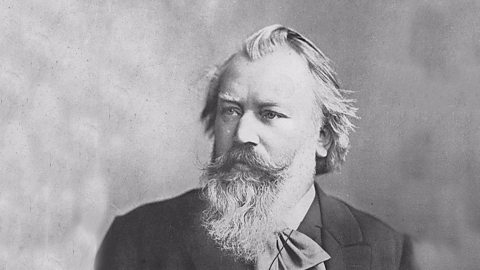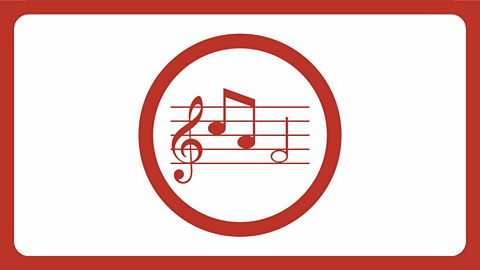Dates: b.1833 / d. 1897
Nationality: German
Period: Romantic
Genre: Orchestral (folk inspired)
Key Musical Elements:
- Pitch

Why is he a Trailblazer?
For many years the sound of the Hungarian Gypsy travelling bands could be heard in the countryside and cities of Europe.
Trailblazer Johannes Brahms was fascinated by the bands’ whirling melodies and dramatic rhythms. He introduced this music to a whole new audience when he wrote Gypsy-inspired dances for the piano – and then began super-sizing them for an entire orchestra.
Listen out for:
Brahms was inspired by the folk music of Hungarian dances called csárdás. Listen out for each of the distinctive folk melodies. Can you recognise them when they repeat? They have a dance like sound to them with wild string melodies and brassy foot-stomping rhythms.
Radzi Chinyanganya introduces Hungarian Dance No. 5, one of Johannes Brahms’ most popular pieces. Inspired by the Hungarian folk dance Czárdás, it’s lively and full of energy.
Fast Facts
Born in Hamburg in Germany, Johannes Brahms quickly became a very talented pianist and would go on to premiere many of his own works at the piano.
A complete perfectionist, Brahms burnt lots of the music he’d written when he was young and, throughout his life, kept on destroying works he didn’t think were good enough.
Brahms could often be found walking in the mountains and exploring the countryside as he felt it helped him think through his musical ideas.
Beethoven’s music was a big influence on Brahms. Later in life Brahms lived in Vienna, the home of his favourite restaurant, “The Red Hedgehog”, and the city where his musical hero, Beethoven, had also lived.
Watch the full performance of Brahms' piece by the ±«Óătv Scottish Symphony Orchestra, conducted by Roderick Cox.
Hungarian Dance No. 5
While playing music in a tavern one evening Brahms met Eduard Remenyi, a famous Hungarian Gypsy violinist. Remenyi taught Brahms all about Gypsy music and Hungarian dances called csárdás.
Brahms was enthralled and used the rhythms and melodies of this music as his inspiration for his 21 Hungarian Dances, which he originally wrote for the piano.
He loved performing them for his friends and would later orchestrate three of the dances himself, with other composers arranging the remaining pieces.
The Hungarian Dance No.5 transforms the intimate drama of the Gypsy band into a big orchestral party – with wild string melodies and brassy foot-stomping rhythms.
Resources
KS2 Lesson Plans
Explore and download lesson plans for six weeks of learning and activities for Hungarian Dance No. 5 in G minor by Johannes Brahms.

Explore and download powerpoint slides for six weeks of learning and activities for Hungarian Dance No. 5 in G minor by Johannes Brahms.

Download the audio version.

Downloadable .zip file containing arrangement and Brahms files.

Downloadable .zip file containing figure notes arrangement.

Where next?
Why not listen to two other very different dances?
You could try the elegant Waltz of the Flowers from Tchaikovsky’s Nutcracker.
Or perhaps head out to Wild West and dance the Hoedown, from Aaron Copland’s Rodeo.
Explore our other Figurenotes arrangements and discover more about inclusive music-making with Ten Pieces.
Get creative and upload your responses using the Ten Pieces Uploader!
Upload and showcase your creative responses
Upload your creative responses to the Ten Pieces repertoire for your chance to feature in the Ten Pieces creative showcase.
